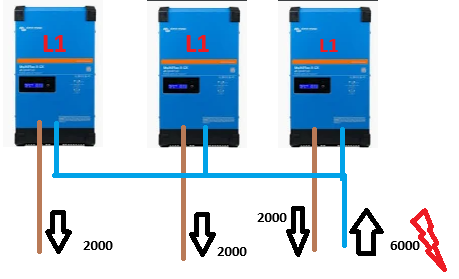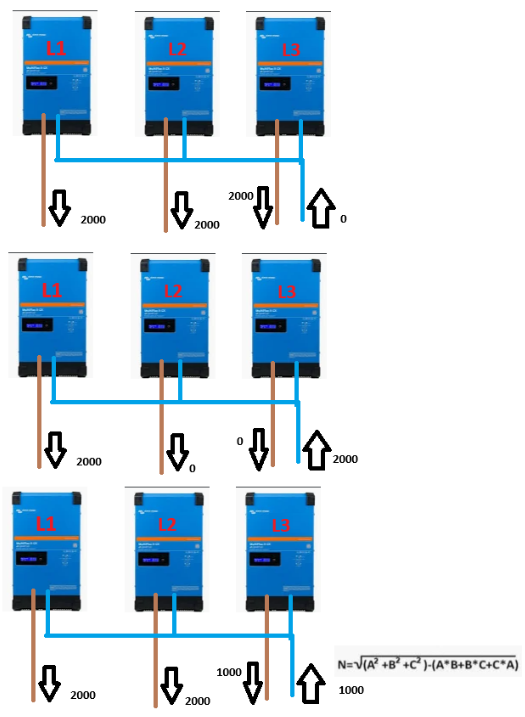Hello,
I have 400v 3 phase service at my residence. (230v line-neutral) I do not have any three phase loads. I have simply balanced the single phase loads across the three phases.
I would like to hookup 3 multiplus 2 10000VA inverters across the three phases. However, with my primary concern being redundancy, I do not want to synchronize them as one unit failing would bring down the whole system.
So, would it damage anything to hook all three unsynchronized units to the same neutral bar? I assume they would be synchronized when utility power is available as they would match the incoming power. When the utility switches off, they might drift from 120 degrees out of phase but that shouldn't matter without any 3 phase loads correct? Each unit would have its own seperate battery, mppt, panels, cerbo gx, touch 50, etc.
I can't seem to find a reason that this wouldn't work. Thanks for your help.



